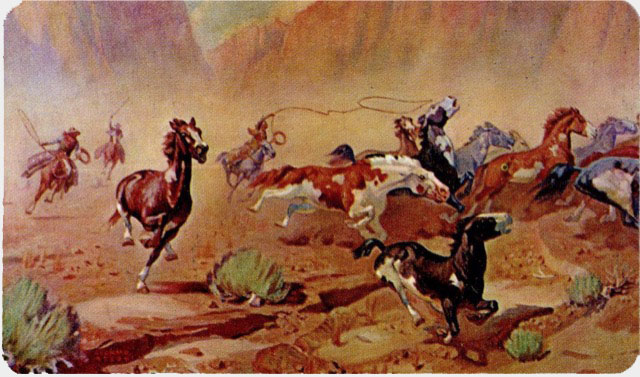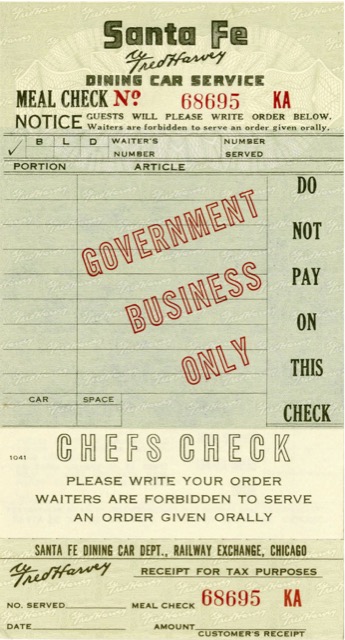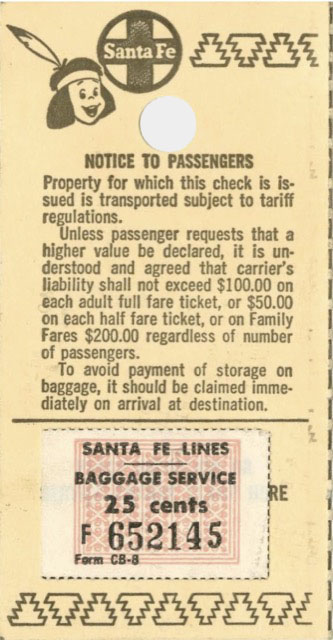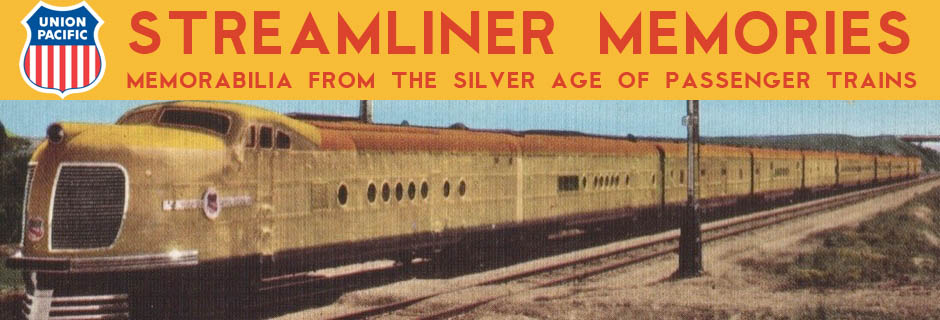Santa Fe produced wall calendars from the early 1900s through 1993, and all of them after 1914 featured paintings of the Southwest or Southwest Indians by one of the Chicago or Taos painters cultivated by the railway. From the early 1930s on, these calendars were paired with wallet-sized pocket calendars that had the painting on one side and the year’s calendar on the other.

Click image to download a 360-KB PDF of this pocket calendar.
Here is the pocket calendar for 1970, featuring “The Roundup of Wild Horses” by Leonard Reedy. A near-complete collection of Santa Fe pocket calendars can be viewed at the Harry Briscoe web site, while David Kiehn has an entire web site devoted to Santa Fe calendars.



Click each image to download PDFs of these hat checks.
Conductors keep track of whether they have checked passenger tickets through the use of “hat checks” that are generally tucked into a clip on the baggage racks above each seat. Here are two hat checks from the Santa Fe.
 Click image to download a 373-KB PDF of this meal check.
Click image to download a 373-KB PDF of this meal check.
For most of the twentieth century, dining car patrons were required to write their own orders on a meal check like this one. This may have been a holdover from a time when many of the waiters (most of whom were black) were illiterate. This meal check says “Government Business,” but I don’t know why government workers were handled separately.
 Click image to download a 200-KB PDF of this baggage tag.
Click image to download a 200-KB PDF of this baggage tag.
The person who received the baggage tag had to pay 25 cents to check luggage. As noted in Santa Fe timetables, “A service charge of 25c for each suitcase or other piece of hand baggage and 50c for each trunk will be made at time of checking.”
 Click image to download a 238-KB PDF of this ad.
Click image to download a 238-KB PDF of this ad.
Finally, I don’t normally collect newspaper ads, but here is one that somehow ended up in my collection. The reference to the Golden Gate Exposition at the bottom of the ad dates it to 1939.

While literacy might have been a factor in the written menu checks (but not too big a factor; the cooks had to read them, after all), I think that the larger issue was shrinkage and inventory control. The written menu checks provided a tally of items sold and since customers were expected to pay by the check total it would be possible to reconcile items expended against monies received. I’m sure that there was still some allowance for spoilage and such but it probably helped to keep systematic pilfering under control.